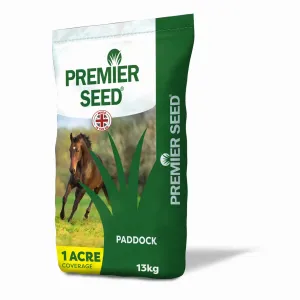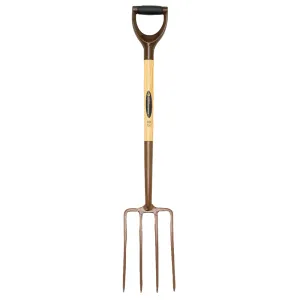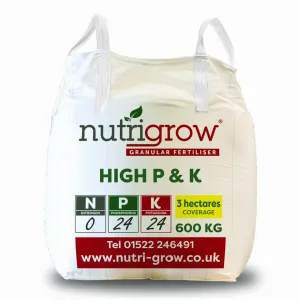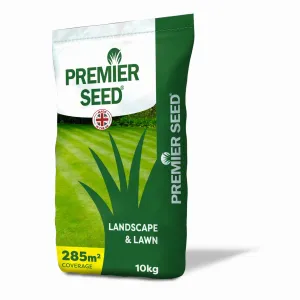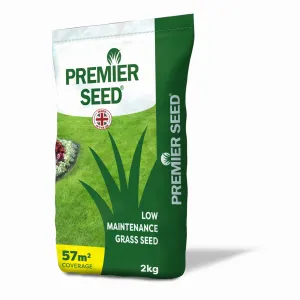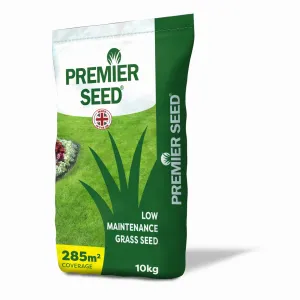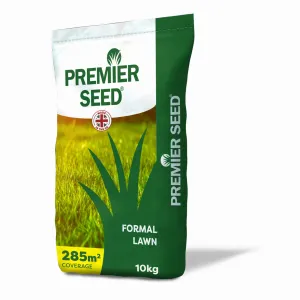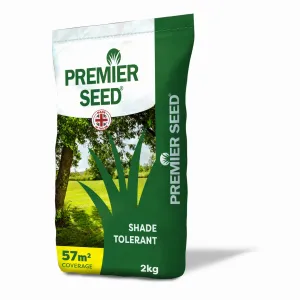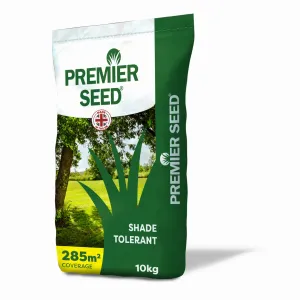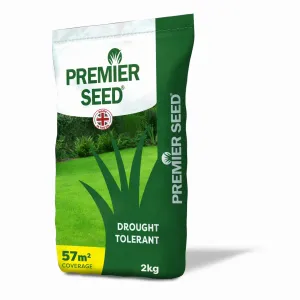You will need:
- Paddock seed
- Spreader
- Fork
- Rake
- Sprinkler
Things To Consider Before Starting A Paddock Renovation:
Whether you are looking to re-seed high wear areas such as gateways, or over-seed or seed paddocks and pasture ready for grazing; the best time to do this is mid spring or early autumn.
Top Tip: Adding new seed to the sward will help improve the vigour & overall look of the field. Only 50% of the original varieties remain in your grass after 5 years; generally, weed grasses replace those lost which are of course less productive.
The same good management applies whether you need to just over-seed or fully re-seed.
Before starting your paddock renovation there are several basic things to consider:
- The optimum pH for grass growth is 6 - 6.5; if this is low, apply some lime to achieve the required level, or if it is too high consider Sulphur or Iron.
- The sward needs to be grazed or cut down to a height of 3 or 4cm.
- Ground temperatures should be around 6 degrees.
- You need a fairly long growing season to facilitate establishment.
The type of grass you are grazing can be important because each species of grass can offer different qualities.
When considering what seed to use, look for the inclusion of creeping red fescue and ryegrass. This will aid the rapid repair of damaged swards and also produce a dense matt of grass which reduces damage to grass and will therefore also aid hoof protection from stones. A typical breakdown of the Paddock Grass Seed we hold in stock would be:
- 35% Belida AG Perennial Rye Grass
- 35% Orion AG Perennial Rye Grass
- 20% Maxima 1 Strong Creeping Red Fescue
- 10% Scots Timothy
A mix like this will tolerate several years of wear and tear.
Top Tips For Early Season Paddock & Pasture Care:
- Rolling and harrowing will help repair winter poaching damage. Harrowing removes dead material, shallow weeds and also aerates the soil.
- Scarifying will help to promote new spring and summer grazing by removing any loose moss and thatch that are stopping the air circulating into the soils surface.
- Test the soil to find out if nitrogen, phosphate or potash needs to be applied to encourage grass growth.
- Continue to pick up droppings regularly. This not only reduces parasites but also cuts down on selective grazing.
- Fence off any areas that have become victim to over poaching during the winter months. These need resting and over seeding if necessary.
Top Tip: Good seed bed preparation is the key to establishing successful pasture. It pays to give extra attention to clearing weeds.
How To Over-Seed Or Seed Successfully:
- Break the surface up with a fork or chain harrow and rake it to make a reasonably fine surface
- Sow the grass seed at the recommended rate usually 7kg/acre for over-seeding and 14kg/acre for completely re-seeding a new field.
- Lightly rake or roll to mix the seed in to the surface.
- Birds may be a problem so either net the area or use bird scarers.
- If the weather remains dry for 2 or 3 days after sowing; water the area gently with a sprinkler.
- Nitrogen should not be applied until the new grass is established as this could cause ‘scorch’ to the new sward and you do not want the new grass to be swamped by the existing herbage.
- Horses can be turned out on the sown area approximately 6 weeks after over seeding but only to lightly graze.
Top Tip: Do not sow the seed in straight lines; doing this is a magnet for hungry slugs.
Once you have successfully revived your grass, it is important to take the necessary steps to keep up the maintenance over time. You will need to apply the correct fertiliser for what your grass requires. Using a DIY soil analysis kit can help to reduce buying and applying the wrong fertiliser and spending money unnecessarily. The removal of moss and other debris from the base of the sward will stimulate ryegrass plants to grow, this will help the grass to be better equipped to compete against weeds.
Top Tip: Good paddock maintenance such as rotation, collecting manure & keeping on top of weeds will all help the longevity of your newly sown paddock.




